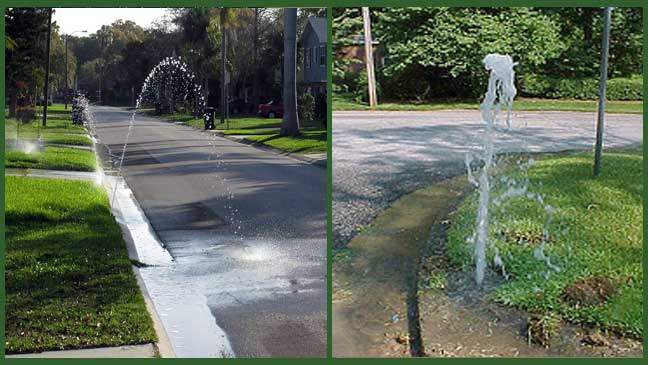Greetings
This year, save water by planting drought-resistant Flowers!
Summer is around the corner and the garden growth shifts into high gear this month. With hot air temperatures and warm soil, these tough-as-nails flowering plants will provide the color you want, while tolerating the summer heat. Not to mention that the use of native plants help support the local ecology. Here are ten prominent native and drought tolerant plants and shrubs.
Also suggestions to replace plant material in your landscape that also conserve water.
Preparation
All plants no matter what their environment, will always do better when the soil is prepared properly beforehand.
Add Organic Matter
Even though these plants can take high heat and are drought tolerant they will do even better with some organic matter worked into the soil first.
Mulch Matters -- If you haven't already, apply a layer of mulch on flower beds and around trees and shrubs 2-3 inches deep around the base of plants. Mulch not only retains moisture, but helps keep the soil cooler, reduces weeds, and prevents disease.
Plants That Beat the Summer Heat
These heat-loving plants that thrive in hot weather. Simply water them once a week to enjoy their blooms all summer long.
Black-eyed Susan
Rudbeckia hirta - Sturdy and easy to grow, this early-summer-blooming flower brightens gardens. Cutting encourages them to rebloom late in the season. The 2- to 4-inch blooms have orange-red rays and a prominent purplish-black cone.
Mealycup Sage
Salvia farinacea - Tall, densely packed flowers appear on this plant, which is native to southern New Mexico, Texas, and Mexico, in late spring, blooms vary from deep violet to white, and cuplike calyxes are covered with white hairs that often have a blue or violet tinge. Like other members of the sage family, mealycup sage is generally pest free.
Threadleaf Coreopsis
Coreopsis verticillata - Southern natives, these easy-to-grow members of the sunflower family yield a profusion of yellow blooms. Their seeds attract birds.
Madagascar Periwinkle
Catharanthus roseus - Native to Madagascar, India, and tropical Asia, these bushy plants thrive in both humid and dry heat. Flowers bloom atop glossy leaves in pure white, pink, rose, or white with a rose or red eye The flower was formerly known botanically as Vinca rosea, and many people still call it vinca.
Lantana
Lantanas - laugh at heat and drought. One of the best possible flowers for tough to grow climates like California. Plus, a lantana garden is butterfly heaven no flowers do a better job of attracting them.
Native to tropical America, lantanas may be annuals or perennials, depending on where you live. Although some selections boast flowers in solid colors, many have bicolor clusters.
Portulaca
This fleshy plant is known for brilliant flowers in a variety of colors. Generally, blossoms open fully in bright light and close by mid-afternoon in hot weather. Portulaca thrives in high temperatures and intense sunlight and is not fussy about soil.
Blanket Flower
Gaillardia sp. - These easygoing summer bloomers feature daisy-like flowers in warm colors—yellow, orange, and red. They thrive on neglect, so put away the watering can and fertilizer. Their blooms make excellent cut flowers
Verbena
The numerous selections of this flower are some of the garden’s most colorful, useful, and easy-to-grow plants. They bloom in late spring, thrive in heat, and tolerate to drought.
Zinnia
Zinnias are longtime garden favorites for colorful, round flowers. The flexible hot-weather plants don’t gain from being planted early and stand still until weather warms up.
Angelonia Angustifolia
This tropical native blooms all summer and loves the heat. The plant displays showy spikes of blue, purple, pink, or white blossoms, and hybrids offer additional color selections. They are excellent as bedding plants or in containers.
Save Our Water Outdoor
Outfit your hose with a shut-off nozzle which can be adjusted down to fine spray so that water flows only as needed. When finished, "Turn it Off" at the faucet instead of at the nozzle to avoid leaks.

- Mulch! Save hundreds of gallons of water a year by using organic mulch around plants to reduce evaporation.
- If you have a swimming pool, consider a new water-saving pool filter. A single back flushing with a traditional filter uses from l80 to 250 gallons or more of water.
Save our Water Indoor
When washing dishes by hand, fill one sink or basin with soapy water. Quickly rinse under a slow-moving stream from the faucet.
- Wash only full loads of laundry and dishes this saves up to 50 gallons per week.
- Repair dripping faucets by replacing washers. If your faucet is dripping at the rate of one drop per second, you can expect to waste 2,700 gallons per year.
- Install a low-flow faucet aerator, which can cut water use in half. Water saved: 1 to 2 gallons per minute.
- Wash only full loads in the dishwasher. An efficient dishwasher usually uses much less water than washing dishes by hand.
- Use the minimum amount of water needed for a bath by closing the drain first and filling the tub only 1/3 full.
- Spend only 5 minutes in the shower. Saves up to 8 gallons each time or replace your showerhead with an ultra-low-flow version. Some units are available that allow you to cut off the flow without adjusting the water temperature knobs.
- Turn off the water while you brush your teeth. Saves up to 2.5 gallons per minute
- Talk to your family and friends about saving water.
Follow the link to learn on how to check for a water leak
http://www.lcra.org/water/utilities/pages/how-to-check-for-leaks.aspMulch! Save hundreds of gallons of water a year by using organic mulch around plants to reduce evaporation.
|
